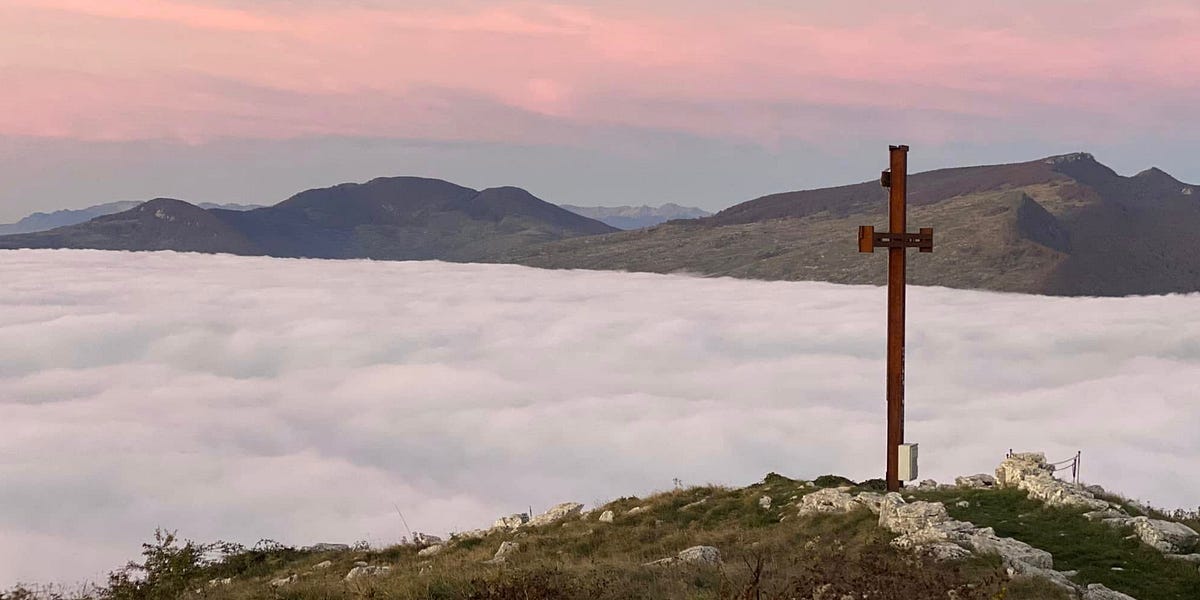The Vatican’s doctrinal office has issued a mixed opinion on alleged Marian apparitions that have occurred in Southern Italy, allowing private acts of devotion but no public worship at the site.
After examining the alleged apparitions at Mount St. Onofrio, the Dicastery for the Doctrine of the Faith determined that “there are several positive aspects and signs of the action of the Holy Spirit in the midst of this alleged supernatural phenomenon,” but that there is also the potential for confusion or risks that may require doctrinal clarification.
Specifically, the dicastery pointed to the alleged apparition’s emphasis on Scripture, the Eucharist, and the Holy Spirit, as well as its calls for prayer and acts of charity. It also warned of possible confusion about the nature of deceased souls, and about disobedience to the local bishop by some advocates of the apparition.
A letter published this week from Cardinal Víctor Manuel Fernández, prefect of the DDF, to Bishop Camillo Cibotti of Trivento said the dicastery had given the apparitions the designation of prae oculis habeatur (“let it be held before the eyes”).
The reported Mount Sant’Onofrio apparitions are a series of alleged visions experienced by Michelino Marcovecchio, a chef in Milan with an elementary school education.
Marcovecchio says the Virgin Mary began appearing to him in 2010 and instructed him to construct a Stations of the Cross display on Mount St. Onofrio in Agnone, Italy.
He complied, and the site today draws pilgrims from around the world.
Marcovecchio says he received messages from Mary regularly through 2024. He also said his deceased mother-in-law has sent him similar messages.
The messages contained in the apparitions include frequent admonitions to prayer and the sacraments, including Mass and Confession, the recitation of the Rosary, and the reading of Scripture. They also emphasize the need to pray for those in purgatory.
In his July 29 letter to the local bishop, Cardinal Fernández said the messages contained in the purported visions “remind us of the fundamental means of sanctification—the Word of God, the Eucharist, Reconciliation—which give us life and joy and prepare us for eternal life.”
“It is important to emphasize how Our Lady always directs us to Jesus Christ,” he added.
But despite these positive elements, Fernández said the DDF’s evaluation had led it to conclude that there were two elements of particular concern associated with the reported visions.
First, he said, the previous bishop of Trivento had warned of disobedience to his prescriptions prohibiting public or private worship at the site.
Fernández noted that these acts of disobedience were not carried out not by the alleged visionary, but by members of the clergy who did not heed the messages’ call for obedience. Still, he said, this leaves “a wound in ecclesial communion” that must be addressed.
The second cause for caution, Fernández said, is the potential for confusion over “the nature of the relationship between the souls of the deceased” and the pilgrim Church, a concern also flagged by the previous bishop of Trivento.
He pointed specifically to “the certainly unusual fact that some souls of the deceased are said to manifest themselves to the alleged visionary through the work of his guardian angel.” Further study is required, he said, to ensure that no problematic means of contacting the souls of deceased people are being practiced or advocated.
As a result, the DDF has granted the prae oculis habeatur designation to the site, permitting personal visits to the site, or visits by small groups, but prohibiting public acts of worship.
The letter specifies that prohibited acts include “1) the celebration of liturgical rites in places linked to the phenomenon without the explicit approval of the competent ecclesiastical authority; 2) pilgrimages or other pastoral events of public importance organized by parishes or other ecclesiastical structures; 3) the possibility of disseminating, without the approval of the ecclesiastical authority, the phenomenon and its alleged messages; 4) the accommodation of people to share this experience.”
Fernández noted that it may be possible for public worship to be permitted at the site in the future, if “the restoration of full ecclesial peace and a clarification of the ambiguities present in the messages” eventually takes place.
The letter from Fernández was issued under the new streamlined process to evaluate supernatural apparitions. The new norms, unveiled in May 2024 by the Dicastery for the Doctrine of the Faith, replace those dating back to 1978.
While the previous discernment process ended in a declaration of either constat de supernaturalitate (“confirmed to be of supernatural origin”) or non constat de supernaturalitate (“not confirmed to be of supernatural origin”), the new norms offer a nuanced sliding scale of recognition for purported apparitions.
The Church now uses in a scale of six possible outcomes, ranging from a declaration that an alleged apparition has been found not to be supernatural, to a judgement of nihil obstat, which says there is nothing preventing a bishop from recognizing an alleged apparition’s pastoral value, or promoting it.
The dicastery’s process urges that investigation of alleged apparitions be undertaken by the diocesan bishop, involving other local bishops as necessary, and in conversation with the local bishops’ conference — with the dicastery in Rome giving a final approval to any decision.
Since it promulgated the new scale, the Vatican has ruled on a number of Marian apparitions and visions, including most famously, Medjugorje.

